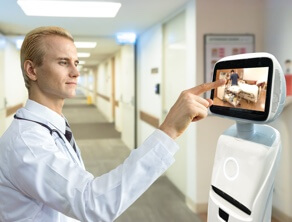Customer Delight in the Digital Age
 The “new renaissance”, as we speak is primarily experience driven. Over the last decade or so, we see that design has acquired a prominence that eluded it for decades. Apple under the direction of Steve Jobs has always been a design and usability oriented company. While these values brought in a lot of buy-in from certain segments of the population, it has been by and large a specialized phenomenon. It’s only after the emergence of the iPhone and its torrential popularity has the appreciation of design become so mainstream.
The “new renaissance”, as we speak is primarily experience driven. Over the last decade or so, we see that design has acquired a prominence that eluded it for decades. Apple under the direction of Steve Jobs has always been a design and usability oriented company. While these values brought in a lot of buy-in from certain segments of the population, it has been by and large a specialized phenomenon. It’s only after the emergence of the iPhone and its torrential popularity has the appreciation of design become so mainstream.
We now see a lot of apps and initiatives that are created completely fresh and spontaneous across a variety of industry verticals. A classic example is the seamless customer experience that an Uber app provides, which is extremely simple and intuitive to use and provides real-time updates on what’s happening with your ride and the driver. All of this is being taken up a notch higher by the new Amazon GO retail outlet which uses a cocktail of new age technologies to make shopping so easy, you never have to stand in a queue to pay the bill.
In this article, we explore some of the key principles that dictate a high-quality customer experience in today’s world.
Follow your customer
In today’s world, the opportunities for the number of channels to engage your users has exploded. While earlier it was primarily in person, phone and later the web, you have a lot more channels today. This presents a challenge as well as an opportunity.
Today your customer can be on Facebook, on your website, using the mobile app, or an apple watch or the person can be in your store browsing products. The opportunity here is to lambently engage with your customer irrespective of the channel. Apart from all the customers’ personal devices like mobile phones, wearable etc, there can also be opportunities to use commonly provided assets like a touch screen based station in a retail outlet that helps the customer get more information about your products or overhead displays that promote a specific product or offer. Every successful channel has a clear purpose and brands should create a strategy accordingly.
Anticipate needs and anxieties
While the ability to access on multiple channels, whatever grasps the customers’ attention in the moment, is extremely important. The experience that is being provided matters a lot too. One of the ways of achieving this is to be able to anticipate the needs, wants and anxieties of your customer ahead of time, and cater to them. A lot of this information can be gathered by doing extensive user studies before you start building your product.
Provide continuity
A cardinal aspect of creating a wholesome customer experience is to provide continuity for your activities irrespective of the channel. For example, I could be watching a video on youtube on my laptop. The minute I switch from my laptop to mobile and I start watching youtube again, I should be able to watch the video exactly from the point where I left off watching it on my laptop.
Integrate information
Engagement data from how a person is using a website can be used to influence his experience on a mobile app and vice versa. It’s quite important to be able to integrate engagement information from all channels, combine that with data from transactional systems like CRM so the best possible experience for each specific situation can be created.
Be instantaneous
Customers make buy/ no buy decisions, or form impressions in a matter of milliseconds. It’s therefore quite important that any intelligence that you’re looking to drive customer experience should be able to react immediately and in real time to any initiatives that the customer could be taking on your platform.
Personalize your interaction
Technology today has made it possible to create a million different experiences for a million different people. This is going to be very important as people like to be treated as individuals with specific needs, wants and personality than as a group. The sense of individuality happens to be core to every person and solutions that cater to this need and personalize the conversation, experience, and interaction has a higher chance of being successful.
Create high points
A smooth customer experience can at times be a bit different from customer delight. Customer delight happens when you exceed customer expectations so much that she goes about talking positively about your product to all her friends. It’s important to do user research, find the high and low points, accentuate the high ones and smoothen out the low experience points.
Tags: customer experience
![Blog-[x]cube LABS](https://d6fiz9tmzg8gn.cloudfront.net/wp-content/uploads/2016/06/blog_banner.jpg)






